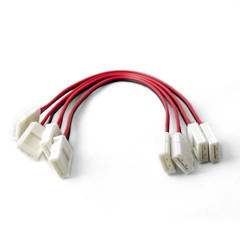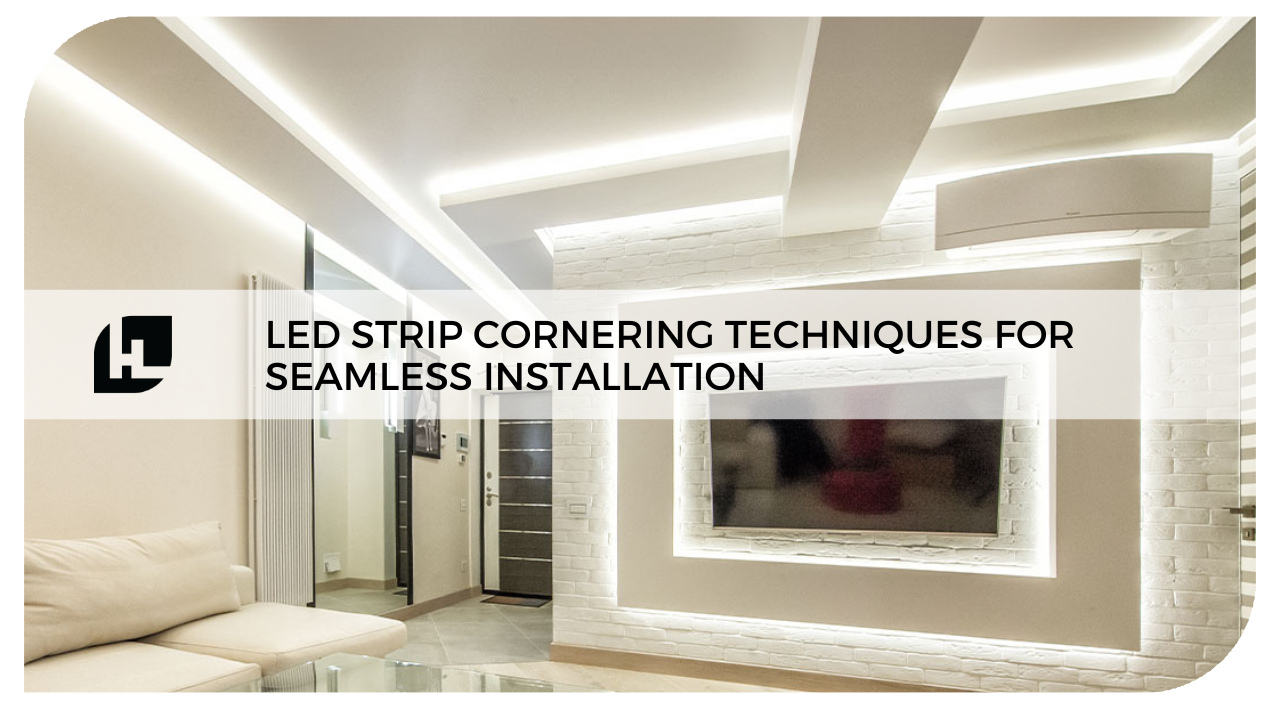Introduction
In LED lighting, that extra something is always in the details that make for a more professional or pleasing finish. An overlooked area is the installation of LED strips in turning corners. Clean and seamless cornering enhances the overall project look, avoids unsightly light leakage, and creates uniform lighting. Electricians, LED installers, custom fabricators, and event planners must learn the skill of cornering techniques for delivering top-quality products. This article will serve as a guide on all the cornering methods, allowing you to create seamless designs.
Planning Your LED Installation
- Measuring Accurately: Precise measurements are crucial for a seamless fit. Use a flexible measuring tape to follow the exact path the LED strip will take, noting the lengths of each segment leading up to and away from the corner. Remember to account for any gaps or overlaps required by your chosen connection method. A survey by the National Electrical Contractors Association (NECA) found that measurement errors account for 15% of electrical installation rework, highlighting the importance of precision.
- Corner Types and Considerations: Corners come in various forms – 90-degree inside and outside corners, acute angles, and obtuse angles. Identify the type of corner you're dealing with as it will dictate the appropriate installation method. For example, a sharp inside corner might necessitate a flexible LED strip, while a standard 90-degree corner can be easily managed with a corner connector. Consider the material the corner is made of (wood, metal, drywall) as this will influence your mounting options.
Corner Installation Methods
Types of Corner Connectors: Corner connectors are pre-fabricated components designed to simplify the cornering process. They come in various shapes and sizes to accommodate different LED strip widths and corner angles (typically 90 degrees). Common types include L-shaped, T-shaped, and cross-shaped connectors. Choose a connector compatible with your LED strip’s density (e.g., 30 LEDs/meter, 60 LEDs/meter) and voltage (12V or 24V).
Installation Steps for Corner Connectors:
Measure and cut the LED strip at the designated cut points, ensuring a clean, perpendicular cut.
Peel back the protective backing on the adhesive strip inside the connector.
Carefully align and insert the LED strip ends into the connector, ensuring proper contact with the copper pads.
Secure the connector to the mounting surface using the provided adhesive or screws.
Using Flexible LED Strips:
Bending Radius and Best Practices: Flexible LED strips are designed to bend, but they have a minimum bending radius. Exceeding this radius can damage the internal circuitry and LEDs. Consult the manufacturer's specifications for the recommended bending radius. When bending, avoid sharp creases and ensure the bend is smooth and gradual.
Installation Steps for Flexible Strips:
Measure and cut the LED strip at the designated cut points.
Carefully bend the strip around the corner, maintaining a smooth curve within the specified bending radius.
Secure the strip to the mounting surface using the adhesive backing or other mounting clips. For added stability, consider using additional adhesive or silicone in high-stress areas.
 |

|
Examples of LED strip connectors
Troubleshooting Common Cornering Issues
Light Leakage: Light leakage at the corner can be caused by improper alignment of the LED strip within the connector or insufficient bending radius when using flexible strips. Adjust the strip's position or increase the bending radius to resolve the issue.
Intermittent Flickering: Flickering usually indicates a loose connection or a faulty power supply. Double-check all connections and ensure the power supply is adequately rated for the total wattage of the LED strips.

